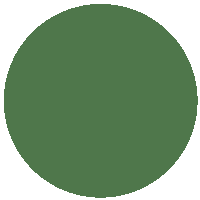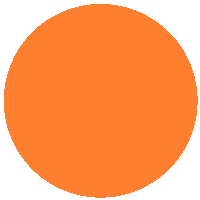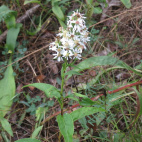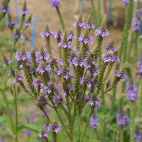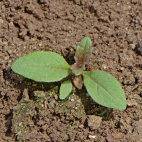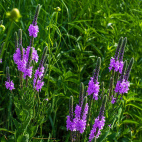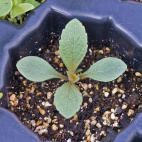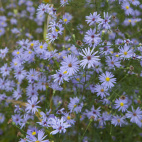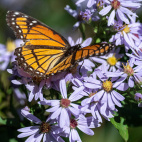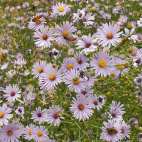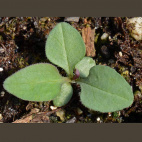Color
Availability
USDA Zone
Region
Type
Duration
Season
Germination
Soil
Sunlight
Height
Use
Narrow Your Search
Color
Availability
USDA Zone
Region
Type
Duration
Season
Germination
Soil
Sunlight
Height
Use
Wildflower Seeds - Northern Region
The Northern region is home to our Canadian friends in the eastern provinces, as well as the northern-most part of the Eastern US. This area is characterized by a long, cold winter with lots of snow, and a short humid summer that only lasts about 3 or 4 months. Most of the area is classified as a UDSA Growing Zone 4 or less, and the species that grow here have interesting ways to perpetuate themselves in spite of the short growing season. There are a lot of forests and wetlands in this region, so adequate moisture is hardly ever a problem. Look up your growing zone to make sure that the Northern wildflower seeds that you want to grow are winter hardy. Alternatively, just order annual flower seeds online so that the plant does not need to make it through the winter, but can reseed itself and come back from seed the next year.
-
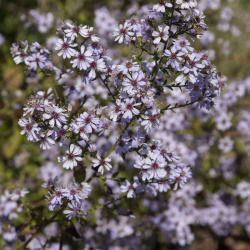 Arrow Leaved Aster Seeds
Aster sagittifolius
Delightful clusters of pale blue and lavender flowers add beauty to any planting in the fall season. Though no longer common in the wild, this Aster occasionally grows in open woodland areas or prairies.Quick View$3.75 Pkt - $54.00 / Oz
Arrow Leaved Aster Seeds
Aster sagittifolius
Delightful clusters of pale blue and lavender flowers add beauty to any planting in the fall season. Though no longer common in the wild, this Aster occasionally grows in open woodland areas or prairies.Quick View$3.75 Pkt - $54.00 / Oz -
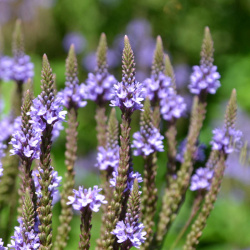 On Sale!
Blue Vervain Seeds
Verbena hastata
These small blue blooms grow on tall stems and are frequently found growing in moist areas. This native attracts a variety of butterflies and is often used in wildflower seed mixes.Quick View$3.48 Pkt - $12.65 / Oz
On Sale!
Blue Vervain Seeds
Verbena hastata
These small blue blooms grow on tall stems and are frequently found growing in moist areas. This native attracts a variety of butterflies and is often used in wildflower seed mixes.Quick View$3.48 Pkt - $12.65 / Oz -
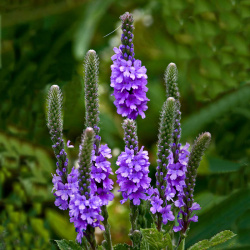 On Sale!
Hoary Vervain Seeds
Verbena stricta
This is the hairy member of the vervain family that sports larger flowers than the cousins. It also is different in that it thrives in dry soils, instead of the damp stuff that the cousins prefer. But like the cousins, this native perennial does attract butterflies and pollinators.Quick Viewx
On Sale!
Hoary Vervain Seeds
Verbena stricta
This is the hairy member of the vervain family that sports larger flowers than the cousins. It also is different in that it thrives in dry soils, instead of the damp stuff that the cousins prefer. But like the cousins, this native perennial does attract butterflies and pollinators.Quick ViewxHoary Vervain Seeds
Verbena stricta
This is the hairy member of the vervain family that sports larger flowers than the cousins. It also is different in that it thrives in dry soils, instead of the damp stuff that the cousins prefer. But like the cousins, this native perennial does attract butterflies and pollinators.
$3.48 Pkt - $12.65 / Oz -
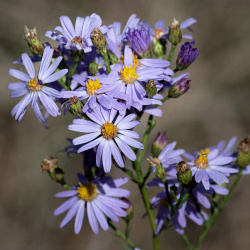 On Sale!
Sky Blue Aster Seeds
Aster azureus
These dainty, azure blue flowers will blanket a fall meadow in stunning beauty. A great source of pollen and nectar in the late fall. Also perfect for a vase or dried flower arrangement.Quick View$3.75 Pkt - $32.00 / Oz
On Sale!
Sky Blue Aster Seeds
Aster azureus
These dainty, azure blue flowers will blanket a fall meadow in stunning beauty. A great source of pollen and nectar in the late fall. Also perfect for a vase or dried flower arrangement.Quick View$3.75 Pkt - $32.00 / Oz -
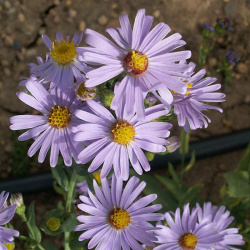 On Sale!
Smooth Blue Aster Seeds
Aster laevis
These bright blue flowers will add color to the autumn landscape. Unlike many asters, this variety produces perfectly smooth foliage and stems. This Aster is widely used in prairie restoration mixes.Quick View$3.75 Pkt - $15.95 / Oz
On Sale!
Smooth Blue Aster Seeds
Aster laevis
These bright blue flowers will add color to the autumn landscape. Unlike many asters, this variety produces perfectly smooth foliage and stems. This Aster is widely used in prairie restoration mixes.Quick View$3.75 Pkt - $15.95 / Oz -
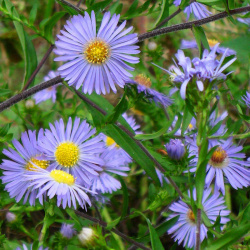 Swamp Aster Seeds
Aster puniceus
Found from northern Canada to southern Texas, this wildflower has one of the largest growing areas of any aster. The perennial usually grows in wetland or marshes, but will grow in average garden soil as well.Quick View$3.75 Pkt - $50.00 / Oz
Swamp Aster Seeds
Aster puniceus
Found from northern Canada to southern Texas, this wildflower has one of the largest growing areas of any aster. The perennial usually grows in wetland or marshes, but will grow in average garden soil as well.Quick View$3.75 Pkt - $50.00 / Oz
The Northern region is home to our Canadian friends in the eastern provinces, as well as the northern-most part of the Eastern US. This area is characterized by a long, cold winter with lots of snow, and a short humid summer that only lasts about 3 or 4 months. Most of the area is classified as a UDSA Growing Zone 4 or less, and the species that grow here have interesting ways to perpetuate themselves in spite of the short growing season. There are a lot of forests and wetlands in this region, so adequate moisture is hardly ever a problem. Look up your growing zone to make sure that the Northern wildflower seeds that you want to grow are winter hardy. Alternatively, just order annual flower seeds online so that the plant does not need to make it through the winter, but can reseed itself and come back from seed the next year.

